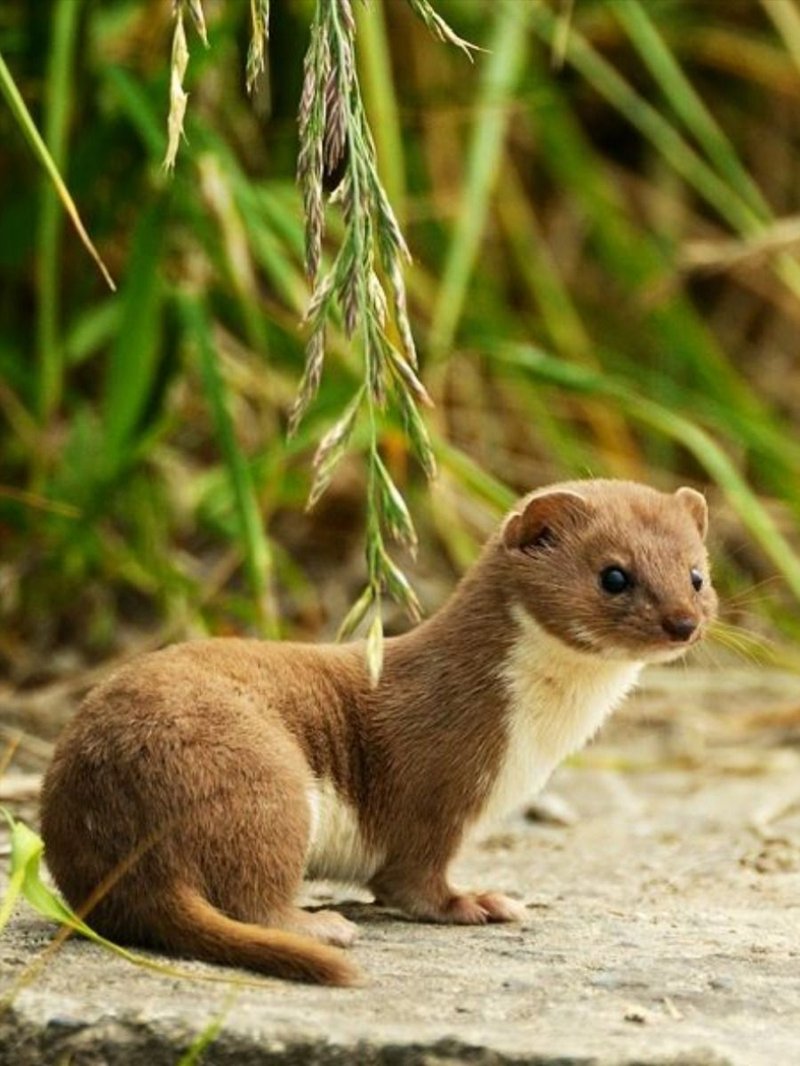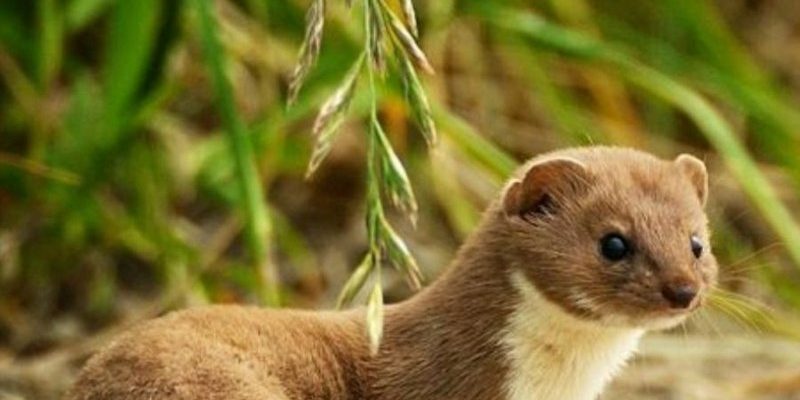
The stoat, also known as the short-tailed weasel or Mustela erminea, is a small carnivorous mammal that belongs to the weasel family. You can find them across various parts of Europe, Asia, and North America, and they have this amazing ability to adapt to different environments. Think of them as nature’s little ninjas, using their agility and cleverness to thrive, whether in snowy woods or grassy fields. Now, let’s dive into some amazing facts about this remarkable creature that you might not know!
1. Master of Disguise
One of the most intriguing aspects of the stoat is its remarkable ability to change colors. In winter, these little mammals sport a stunning white coat, allowing them to blend in seamlessly with the snow. When spring rolls around and the snow melts away, their fur transforms back to a rich brown. This wardrobe change isn’t just for show; it’s a vital survival tactic. By camouflaging with their surroundings, stoats can sneak up on prey and avoid predators themselves.
Imagine walking through a snowy landscape and catching a glimpse of a white stoat darting through the snow; it’s like spotting a ghost! This ability to adapt their appearance is not just a fun fact—it’s crucial for their hunting and survival strategies.
2. Tiny but Mighty
Despite their small size, stoats are fierce hunters. They typically weigh between 1 to 3 pounds and measure about 10 to 12 inches long, with an additional tail length of around 4 to 5 inches. You might think that being small makes them weak, but here’s the thing: stoats are known to take down prey much larger than themselves, including rabbits!
They use their speed and agility to chase down their food, often employing a pounce technique similar to that of cats. Can you picture a tiny creature like this launching into the air? It’s both adorable and impressive! Their hunting prowess allows them to thrive in various environments, making them adaptable predators in the wild.
3. Stoat Social Life
Stoats are generally solitary animals. They don’t often form packs or groups, which is quite different from animals like wolves. However, they do have a fascinating approach to mating. During the breeding season, male stoats will compete for the attention of females, showing off their agility and strength.
Once the mating process is complete, the females have a unique reproductive strategy called delayed implantation. This means the fertilized egg doesn’t immediately implant in the uterus; instead, it waits until conditions are just right for the growing young. This ensures that the babies will have a better chance of survival when they arrive in the spring, when food is more abundant. It’s a clever way of timing births in accordance with environmental conditions!
4. Unique Sounds and Communication
If you’ve ever been close to a stoat, you might have heard some pretty interesting sounds. Stoats have a range of vocalizations that they use to communicate with each other. From high-pitched whistles to hisses and growls, they have a whole vocabulary!
These sounds can indicate everything from excitement to alarm. For example, if a stoat feels threatened, it may hiss to warn others of danger. It’s like how we might shout to alert friends in a crowded room. Understanding their sounds can help us appreciate their behavior and social interactions more deeply, adding another layer to their intriguing character.
5. A Gateway to the Wild
Stoats play an essential role in their ecosystems. They help control populations of small mammals, such as rodents and rabbits. By keeping these populations in check, stoats contribute to a balanced ecosystem.
Think of them as nature’s pest control agents! Without predators like stoats, small animal populations could explode, leading to overgrazing or other ecological issues. This makes the stoat not just fascinating but vital to the health of their habitats. It’s a reminder of how interconnected life is and how even the smallest creatures can have a huge impact on the environment.
6. A Snack with a Twist
When it comes to meals, stoats are not picky eaters. They mainly feast on small mammals, birds, and even insects. What’s particularly interesting is their hunting style. Unlike some predators that might stalk or ambush, stoats often chase their prey down. They can sprint at incredible speeds, reaching up to 20 miles per hour.
You might wonder how such a small creature can consume so much! A stoat usually eats about 40% of its body weight daily. That’s like a human eating several large pizzas in one day! This high protein diet fuels their energy levels, allowing them to maintain their active lifestyle.
7. Evolutionary Marvels
Stoats are part of the Mustelidae family, which also includes otters, badgers, and ferrets. This family has evolved in amazing ways over millions of years. For example, stoats have developed elongated bodies and short legs, which allow them to slip into tight spaces and hunt effectively.
This evolutionary design isn’t just a random occurrence; it’s a result of millions of years of adapting to their environments. Their unique physical traits not only make them great hunters but also help them navigate through dense underbrush or burrows while escaping predators. It’s like they were built for their lifestyle, each adaptation finely tuned to maximize their survival chances.
8. Cultural Significance
Throughout history, the stoat has appeared in various cultures and folklore, often symbolizing cunning and agility. In some traditions, they are seen as protectors of crops, while in others, they represent tricksters.
In ancient Greek mythology, stoats were thought to have magical qualities. That’s quite a reputation for such a small animal, right? These cultural connections highlight how humans have long been fascinated by the stoat’s incredible abilities and charming demeanor.
9. A Conservation Perspective
While stoats are generally not endangered, their habitats face challenges, largely due to human activity. Urban development, agriculture, and pollution can disrupt their natural environments.
Protecting their habitats is crucial for maintaining the balance they provide in ecosystems. Efforts to conserve hedgerows and wetlands can help ensure the stoat remains a part of our natural world for future generations. It’s a reminder that our actions can impact even the tiniest wildlife around us, and being aware of this can lead to a more harmonious relationship with nature.
10. Lasting Impressions
Whether you encounter them in the wild or learn about them from afar, stoats leave a lasting impression. Their incredible adaptability, distinct personalities, and significant roles in ecosystems make them a fascinating topic.
So, the next time you hear someone mention the stoat, you can share some of these amazing facts. They’re not just cute little critters; they’re marvels of nature that deserve our admiration and respect. Understanding such creatures reminds us of the beauty and complexity of the natural world we’re a part of.
In conclusion, the stoat is a small but mighty creature, blending seamlessly into its environment while playing a crucial role in maintaining ecological balance. Learning about them offers us a glimpse into the wonders of nature and the importance of preserving it. Next time you’re outside, keep an eye out for these elusive animals—you might just spot one in action!

